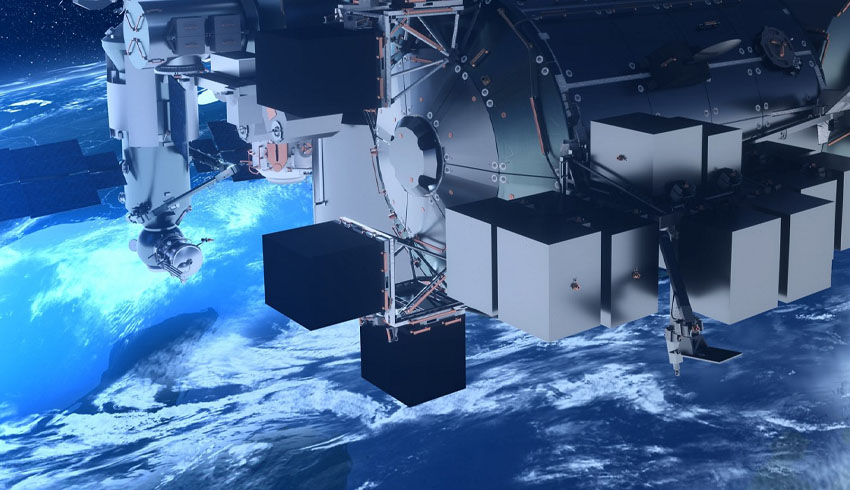
The Xen-Hub is a greater than 10 gigabyte per second optical communications terminal. The terminal was enabled with a technology transfer from the NASA Jet Propulsion Laboratory and is designed to increase satellite communications bandwidth.
The Airbus-built Bartolomeo platform offers external science and payload hosting capabilities on the ISS, providing new opportunities for science and research.
The platform, launched from the Kennedy Space Center in Florida, was installed on the ISS Columbus module on 1 April. Bartolomeo was developed by Airbus using its own funds, is an investment of Airbus and is operated in a partnership with ESA, NASA and CASIS.
Debra Facktor, head of Airbus US Space Systems, said, “Xenesis' payload will be one of the first from the US to be installed on the Bartolomeo platform and is an opportunity to demonstrate the viability of their optical communication space terminal for multiple customers.
“In addition, Airbus and the ISS National Lab are inviting additional users for research and test opportunities on the Bartolomeo platform.”
The low orbit of the ISS offers a stable location for proving ultra-low latency communications, in excess of 10Gb/s. Bartolomeo is located in an optimal position on the ISS, offering direct views of Earth from approximately 240 miles altitude, allowing Xen-Hub to maximise its pass time and increase the throughput of data.
Bartolomeo is a cost effective and time efficient alternative to small satellites and CubeSats for any kind of mission. It can accommodate up to 12 different experiment modules, supplying them with power and providing data transmission to Earth.
Bartolomeo is suitable for many types of experiments, including Earth observation, environmental and climate research, robotics, material sciences and astrophysics.
Jeff Glattstein, president of Xenesis, added, “We are pleased to be partnered with Airbus for our optical communications test mission on Bartolomeo. The Airbus platform gives us the utmost confidence for a successful endeavour, allowing Xenesis to focus on our technology development while Airbus provides the guidance, support and infrastructure necessary to host the system on the ISS.”
It provides sought-after payload-hosting capabilities for customers and researchers to test space technologies, verify a new space business approach, conduct microgravity experiments or enter into in-space manufacturing endeavours.
Launch opportunities are available on every servicing mission to the ISS, which occur about every three months. The payload accommodation allows slots for a wide range of payload mass, from 11 to 990 pounds.
Airbus will provide optical data downlink capacity of one to two terabytes per day.
Payloads can be prepared and ready to operate in approximately 12 months. Payload sizes, interfaces, preparation before launch and integration process are largely standardised. This reduces lead times and saves costs significantly compared to traditional mission costs.
Airbus offers this easy access to space as an all-in-one mission service. This includes technical support in preparing the payload; launch and installation; operations and data transfer; and an optional return to Earth.
Receive the latest developments and updates on Australia’s space industry direct to your inbox. Subscribe today to Space Connect here.









